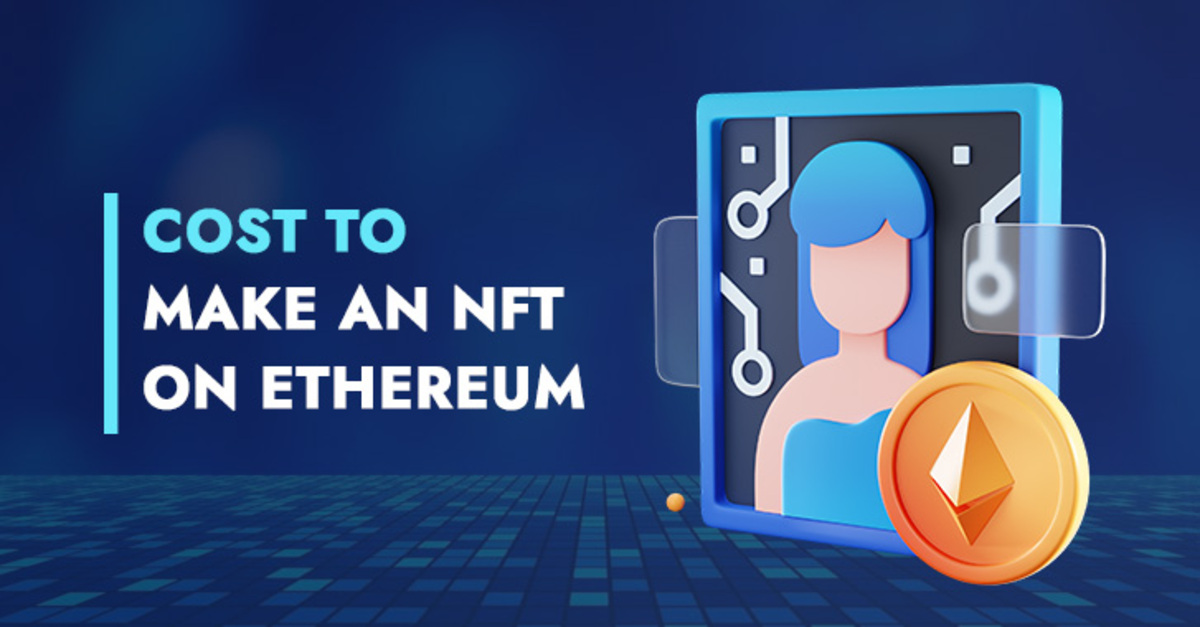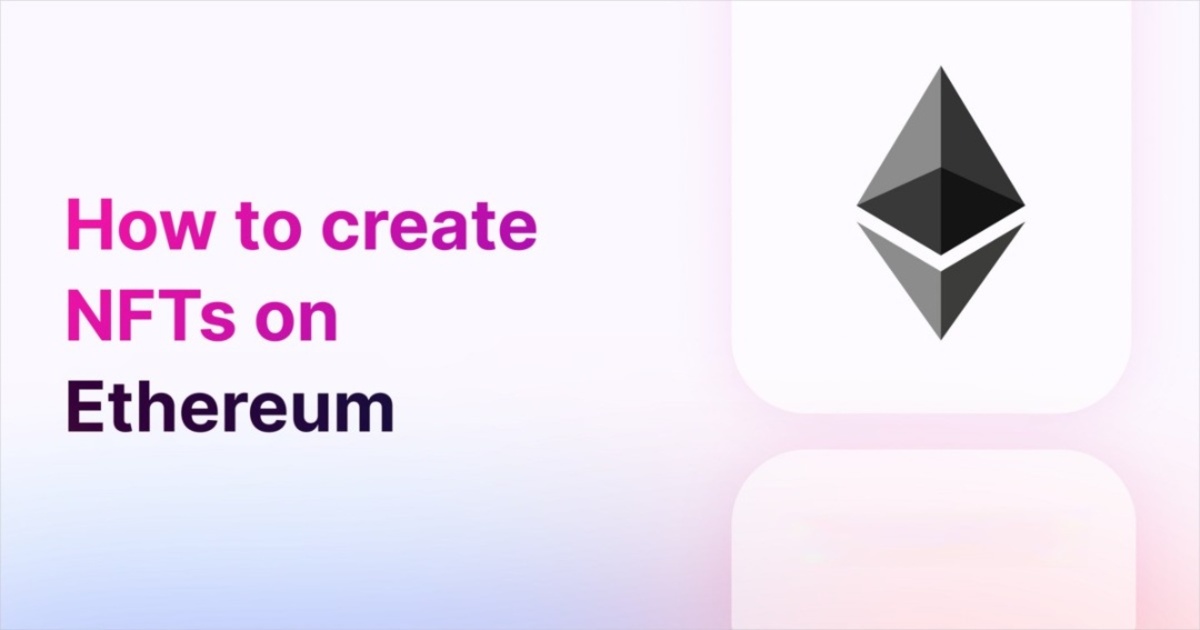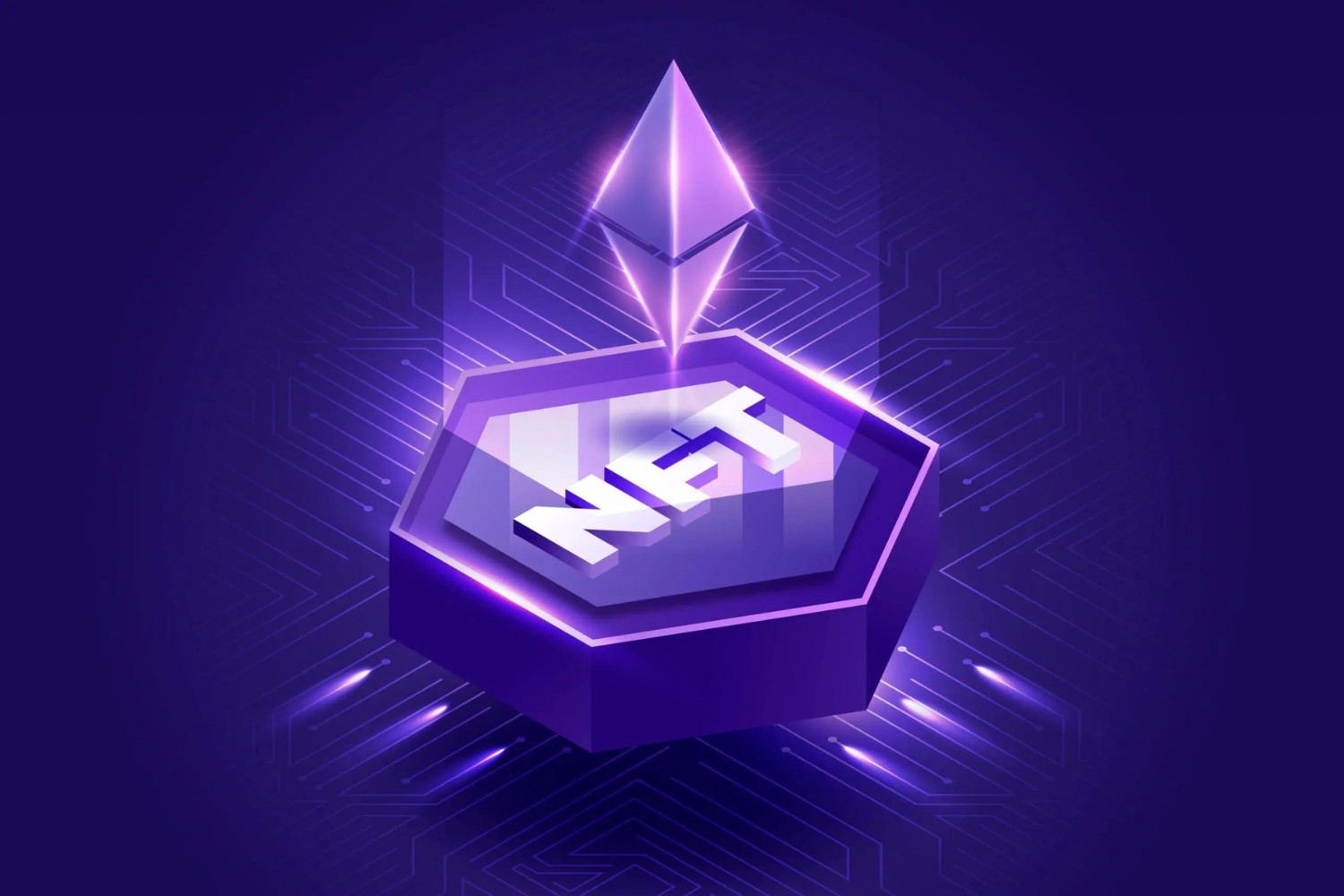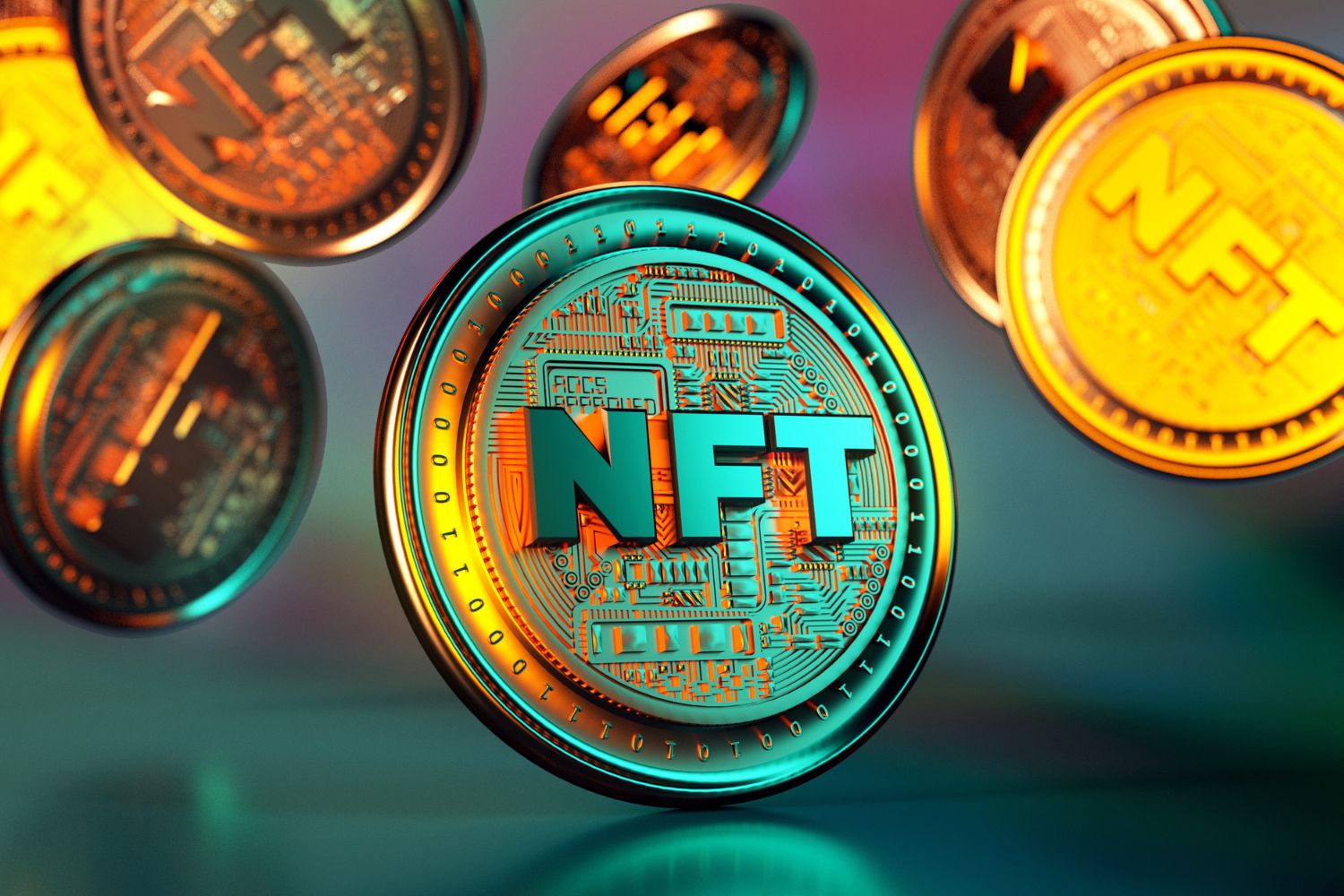Introduction
Welcome to the intriguing world of non-fungible tokens, commonly known as NFTs. In recent years, NFTs have gained immense popularity and grabbed the attention of artists, collectors, and investors alike. These unique digital assets have revolutionized the way we think about ownership and creativity in the digital realm. From digital art, music, videos, collectibles to virtual real estate, NFTs have opened up a new frontier of possibilities.
At the heart of the NFT ecosystem is the process of minting, which involves creating and issuing a new NFT onto a blockchain network, such as Ethereum. But have you ever wondered how much it costs to mint an NFT on Ethereum? In this article, we will delve into the factors that determine the cost of minting an NFT and help you gain a better understanding of the expenses involved.
Minting an NFT involves more than just the creation of a digital asset. It encompasses various elements, including transaction fees, gas fees, and other network-related costs. As the Ethereum network is the most commonly used blockchain for NFTs, we will primarily focus on the costs associated with minting on this platform. However, it’s important to note that other blockchain networks may have their own fee structures.
Whether you are an artist looking to tokenize your artwork or an entrepreneur exploring the world of NFTs, understanding the cost implications of minting an NFT is crucial. By having a clear understanding of the expenses involved, you can make informed decisions and optimize your resources effectively. So, let’s dive into the exciting world of NFTs and explore the factors that influence the cost of minting an NFT on Ethereum.
What is an NFT?
Before diving into the cost of minting an NFT, let’s first understand what exactly an NFT is. NFT stands for non-fungible token, and it represents a unique digital asset that cannot be replicated or exchanged on a like-for-like basis. Unlike cryptocurrencies like Bitcoin or Ethereum, which are fungible and can be exchanged for one another, NFTs have distinguishing characteristics that make them one-of-a-kind.
NFTs are built on blockchain technology, which ensures their authenticity, ownership, and provenance. Each NFT is assigned a distinct and verifiable digital signature, similar to a certificate of authenticity for physical art. This digital signature serves as proof of ownership, allowing creators and collectors to track and authenticate the origin of the digital asset.
One of the key attributes that makes NFTs valuable is their ability to represent ownership of digital content. This can range from artwork, music, videos, virtual real estate, virtual goods, and even tweets. NFTs provide a way for creators to monetize their digital creations, as ownership can be transferred and sold in online marketplaces.
The uniqueness and scarcity of NFTs create a sense of exclusivity and value, driving demand among collectors and enthusiasts. Furthermore, the transparency and immutability of blockchain technology make it nearly impossible to counterfeit or manipulate NFTs, ensuring the integrity of ownership and provenance.
It’s worth noting that although NFTs have gained significant attention and value, they have also sparked debates about their environmental impact and the potential for copyright infringement. As the NFT market continues to evolve, it is important for creators and investors to stay informed about the challenges and opportunities that arise in this ever-changing space.
Now that we have a basic understanding of what an NFT is, let’s explore the intricacies of minting an NFT on the Ethereum network and the costs associated with it.
How does minting an NFT work?
Minting an NFT involves the process of creating and issuing a unique digital asset on the Ethereum blockchain. This process is made possible through the use of smart contracts, which are self-executing contracts with the terms of the agreement directly written into the code.
To mint an NFT, creators utilize platforms or marketplaces that support NFT creation and deployment. These platforms act as intermediaries, simplifying the process for creators and providing a user-friendly interface.
The first step in minting an NFT is to prepare the digital asset that will be tokenized. This can be an artwork, music file, video, or any other form of digital content. It’s essential to ensure that the asset meets the platform’s specifications and requirements, such as file size and format.
Once the digital asset is ready, the creator can proceed to the minting process. This typically involves uploading the digital file to the platform, providing relevant metadata such as title, description, and optionally, royalties or licensing terms. The metadata is crucial as it provides additional information about the NFT and helps potential buyers understand its value and authenticity.
Upon submitting the necessary information, the platform will generate a unique token address for the NFT, also known as the token ID. This token ID becomes the identifier for the NFT on the blockchain, making it distinguishable from other NFTs.
The next step is to deploy a smart contract that represents the NFT on the Ethereum blockchain. The smart contract includes the details of the NFT, such as ownership information, metadata, and any additional functionality specific to the NFT.
During the deployment of the smart contract, gas fees come into play. Gas fees are the transaction fees required to execute operations on the Ethereum network. The complexity and data size of the smart contract will determine the amount of gas required and, in turn, the cost of the transaction. Gas fees can fluctuate depending on network congestion and demand, so it’s essential to consider these dynamic fees when minting an NFT.
Once the smart contract is deployed and the transaction is confirmed, the NFT is officially minted and becomes part of the Ethereum blockchain. From this point on, the NFT can be bought, sold, or traded on various platforms and exchanges.
Now that we understand the process of minting an NFT, let’s take a closer look at the different factors that influence the cost of minting an NFT on Ethereum.
Factors that affect the cost of minting an NFT
When it comes to minting an NFT on the Ethereum network, several factors influence the overall cost. Understanding these factors can help creators and investors plan and budget effectively. Let’s explore the key elements that impact the cost of minting an NFT.
1. Gas Fees: Gas fees play a significant role in determining the cost of minting an NFT on Ethereum. Gas fees are the fees paid by users to execute operations on the Ethereum network. The complexity and data size of the smart contract, as well as network congestion, can influence the amount of gas required for the transaction. Higher gas fees often result in higher minting costs, so it’s essential to monitor gas prices and choose the optimal timing for minting.
2. Ethereum Network Congestion: The popularity of Ethereum and the number of transactions being processed on the network can impact the cost of minting an NFT. During periods of high demand and congestion, gas prices tend to increase, leading to higher minting costs. It’s advisable to be mindful of network congestion and choose times when the network is less crowded to minimize costs.
3. Token Standards and Complexity: The choice of token standards, such as ERC-721 or ERC-1155, can influence the cost of minting an NFT. Each token standard has different functionalities and requires varying levels of gas for deployment. Additionally, the complexity and data size of the smart contract, including metadata and royalties, can affect the overall cost. It’s important to consider the desired features and compatibility requirements when selecting the token standard to minimize unnecessary expenses.
4. Platform Fees: Some NFT platforms or marketplaces charge fees for minting and listing NFTs. These fees are often a percentage of the sale price or a fixed amount. It’s crucial to carefully evaluate the platform’s fee structure and factor in these costs when calculating the overall cost of minting an NFT.
5. External Services and Additional Features: Minting an NFT may involve utilizing external services and additional features, such as enhanced metadata, storage solutions, or blockchain interoperability. These services and features often come with their own costs, so it’s important to assess their value and consider the impact on the overall minting expenses.
By considering these factors and conducting thorough research, creators and investors can make informed decisions regarding the cost of minting an NFT. While minting an NFT involves expenses, it’s essential to weigh the potential benefits and opportunities that come with owning and trading unique digital assets.
Having explored the factors that affect the cost of minting an NFT, let’s move on to understanding the concept of gas fees on the Ethereum network and their significance in the minting process.
Gas fees on the Ethereum network
Gas fees are a crucial aspect of the Ethereum network and play a significant role in the cost of minting an NFT. To understand gas fees, it’s important to have a basic understanding of how transactions are processed on the Ethereum blockchain.
When a transaction is initiated on Ethereum, whether it’s minting an NFT or executing any other operation, it needs to be verified and included in a block by miners. Gas fees are the charges users pay to compensate miners for processing their transactions. These fees are denominated in Ether (ETH) and are proportional to the amount of computational resources required to execute the transaction.
The complexity and data size of a transaction determine the amount of gas required. For example, minting an NFT with a large file size or including extensive metadata in the smart contract would require more computational resources and, therefore, higher gas fees.
Gas fees are dynamic and can fluctuate depending on the level of network congestion and demand. During periods of high activity on the Ethereum network, gas fees tend to increase as users compete to have their transactions processed quickly. Conversely, during quieter periods, gas fees can be lower.
To determine the appropriate gas fee for a transaction, users set a gas price, measured in Gwei (10^9 Wei, the smallest denomination of Ether). The gas price represents the amount a user is willing to pay per unit of gas. Miners prioritize transactions with higher gas prices, as they offer greater incentives.
It’s important to note that gas fees are not constant, and users may need to adjust their gas price to ensure timely processing of their transactions. Various tools and platforms provide real-time information on gas fees, enabling users to make informed decisions about setting the appropriate gas price.
Gas fees are a fundamental part of the Ethereum blockchain and serve as a mechanism to allocate resources and incentivize miners to process transactions. While gas fees add to the cost of minting an NFT, they ensure the security and efficiency of the Ethereum network.
Now that we have a better understanding of gas fees on the Ethereum network, let’s explore how to calculate the cost of minting an NFT, taking into account these fees and other considerations.
Calculating the cost of minting an NFT
Calculating the cost of minting an NFT involves taking into account various factors, including gas fees, platform fees, and any additional services utilized during the minting process. Let’s break down the steps involved in calculating the overall cost.
1. Gas Fees: Gas fees are a significant component of the overall cost of minting an NFT. To calculate the gas fees, you need to consider the gas price (in Gwei) and the gas limit. The gas price represents the amount you are willing to pay per unit of gas, and the gas limit determines the maximum amount of gas you are willing to use for the transaction. Multiply the gas price by the gas limit to calculate the total gas fees in Ether. You can convert the Ether amount to your preferred currency for a clearer understanding of the cost.
2. Platform Fees: Some NFT platforms or marketplaces charge fees for minting and listing NFTs. These fees can vary, so it’s important to consider them when calculating the overall cost. Determine the platform fees either as a percentage of the sale price or a fixed amount, and factor them into the total cost.
3. Additional Services: If you have utilized any external services or additional features during the minting process, such as enhanced metadata or storage solutions, consider their associated costs. These costs may vary depending on the service provider or platform used.
To calculate the total cost of minting an NFT, add up the gas fees, platform fees, and any additional service costs. This will give you an estimate of the expenses involved in creating and deploying your NFT on the Ethereum network.
It’s important to note that the cost of minting an NFT can vary depending on factors like network congestion, gas price fluctuations, and the specific platform or service used. It’s advisable to conduct thorough research and compare different platforms and services to find the most cost-effective option for your needs.
By calculating the cost of minting an NFT, you can plan your budget effectively and ensure that the expenses align with the anticipated value and potential returns of your NFT.
Now that we understand how to calculate the cost, let’s explore other fees and considerations to keep in mind when minting an NFT.
Other fees and considerations
When minting an NFT, there are several other fees and considerations to keep in mind that can impact the overall cost and success of your NFT venture. Let’s explore some of these factors.
1. Transaction Fees: Apart from gas fees, there may be additional transaction fees associated with minting an NFT on certain platforms or transferring ownership of the NFT. These fees can vary in amount and structure, so it’s essential to review and factor them into your cost calculations.
2. Storage Costs: Storing the digital files and associated metadata of your NFT may come with storage costs, especially if you opt for decentralized storage solutions. Depending on the size and duration of storage required, these costs can add up over time. Consider the storage costs when evaluating the overall expenses of your NFT project.
3. Secondary Market Fees: If you plan to sell or trade your NFT on a marketplace, be aware of the fees charged for listing and transaction facilitation. Marketplaces often charge a percentage fee or a flat rate for each sale made. It’s important to factor in these fees to understand the true cost and potential returns of your NFT investment.
4. Intellectual Property and Legal Considerations: Minting an NFT involves digital assets that may be subject to copyright or other intellectual property rights. It’s important to ensure that you have the necessary rights and permissions to tokenize and sell the digital content. Legal costs related to intellectual property and any required licenses should be taken into account when assessing the total cost.
5. Marketing and Promotion: Minting an NFT is not just about the technical process but also about creating visibility and demand for your digital asset. Consider the costs associated with marketing, promoting, and building a community around your NFT. These expenses can vary depending on the platforms, advertising channels, and strategies you choose to employ.
Taking these fees and considerations into account will give you a more comprehensive understanding of the total financial investment required for minting and managing your NFT. It’s crucial to evaluate these costs alongside the potential returns and unique features of your NFT to make informed decisions and ensure a successful venture.
Now that we have explored the various fees and considerations, let’s conclude our journey with some cost-saving tips for minting an NFT.
Cost-saving tips for minting an NFT
Minting an NFT can involve various costs, but there are several strategies you can employ to optimize your expenses and save money. Consider these cost-saving tips when venturing into the world of NFTs:
1. Timing: Gas fees on the Ethereum network can fluctuate based on network demand and congestion. Keep an eye on gas prices and choose periods of lower activity to mint your NFT. By minting during quieter times, you can take advantage of lower gas fees and potentially save on transaction costs.
2. Gas Optimization: When creating your smart contract, aim for efficiency and optimize the gas usage. Consider simplifying the code and removing unnecessary operations or data to reduce the gas fees associated with contract deployment. Gas optimization can help minimize the overall cost of minting your NFT.
3. Platform Comparison: Research and compare different NFT platforms and marketplaces to find the most cost-effective option for minting and listing your NFT. Take into account the platform fees, transaction fees, and services provided. Choose a platform that aligns with your budget and offers robust features to maximize your return on investment.
4. External Services: Evaluate the need for external services and additional features during the minting process. While these services can enhance the functionality and appeal of your NFT, they may also come with additional costs. Consider the value they add to your NFT and prioritize the ones that are most beneficial to your goals.
5. Storage Solutions: Explore different storage options for your NFT files and metadata. Decentralized storage platforms may offer cost-effective solutions compared to traditional centralized hosting. Assess the storage costs and choose the option that best suits your needs and budget.
6. Community Outreach: Instead of solely relying on paid marketing and promotion, leverage the power of community outreach and engagement. Engage with online communities, social media platforms, and art networks to build organic visibility for your NFT. This approach can help minimize marketing costs while fostering genuine interest in your digital asset.
By implementing these cost-saving tips, you can intelligently manage your expenses and maximize the value of your NFT venture. Remember that cost optimization should be balanced with the quality and potential returns of your NFT, ensuring a sustainable and successful journey.
With these cost-saving strategies in mind, you are now ready to embark on your NFT minting journey. Best of luck!
Conclusion
Minting an NFT on the Ethereum network involves various costs, including gas fees, platform fees, and additional services. Understanding these costs and factors is essential for creators and investors looking to enter the world of NFTs.
Gas fees, which are the transaction fees required to execute operations on the Ethereum network, play a significant role in determining the overall cost of minting. Factors such as network congestion and the complexity of the smart contract can influence gas fees, so it’s crucial to monitor gas prices and choose optimal times for minting to minimize expenses.
Apart from gas fees, platform fees, storage costs, and additional services can add to the overall cost. It’s important to consider these fees and evaluate their value in relation to the potential returns of your NFT investment. Conducting thorough research, comparing different platforms, and optimizing your gas usage can help you save money and make informed decisions.
While cost is an important aspect of minting an NFT, it’s equally important to consider the quality, uniqueness, and appeal of your digital asset. Minting an NFT is not just about monetary investment, but also about creating and fostering a community around your artwork, music, or digital creation.
Remember, the NFT space is continually evolving, and new opportunities and challenges arise. Stay informed, keep exploring, and adapt your strategies accordingly to navigate this exciting landscape.
With a clear understanding of the costs involved, the factors affecting those costs, and some valuable cost-saving tips, you are ready to embark on your NFT minting journey. Embrace the possibilities, unleash your creativity, and enjoy the thrilling world of non-fungible tokens.
Best of luck with your NFT endeavors and may they bring you success, innovation, and joy!

























